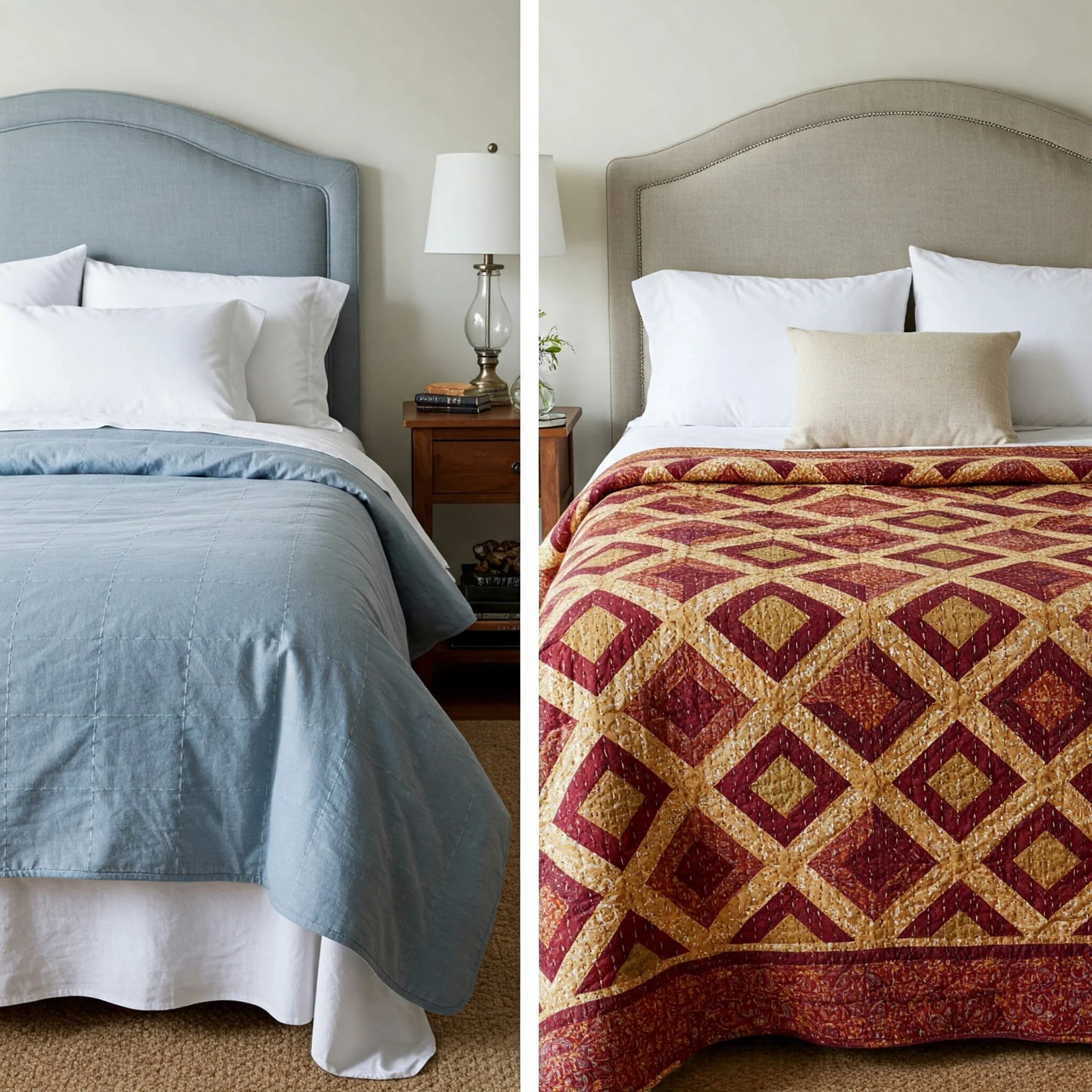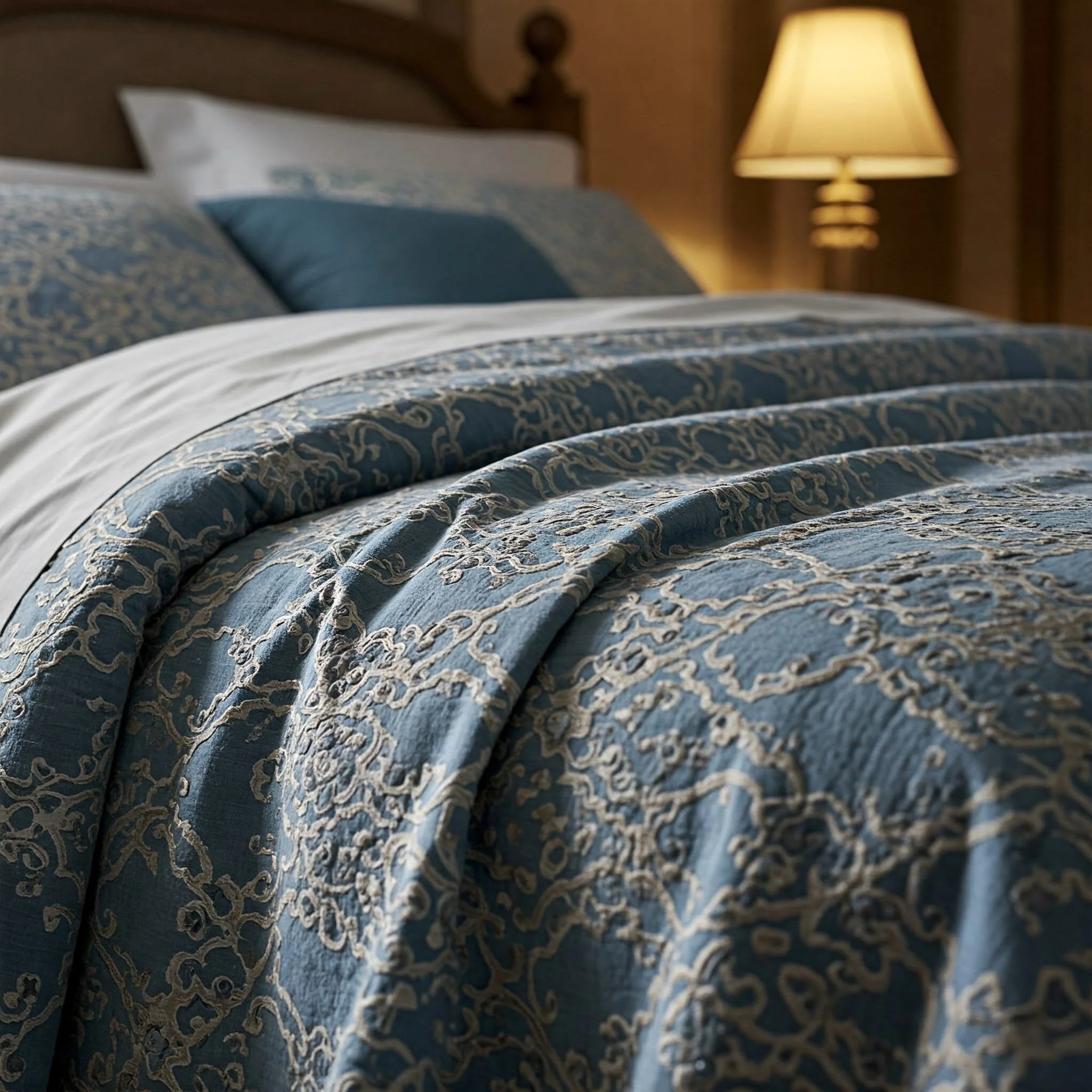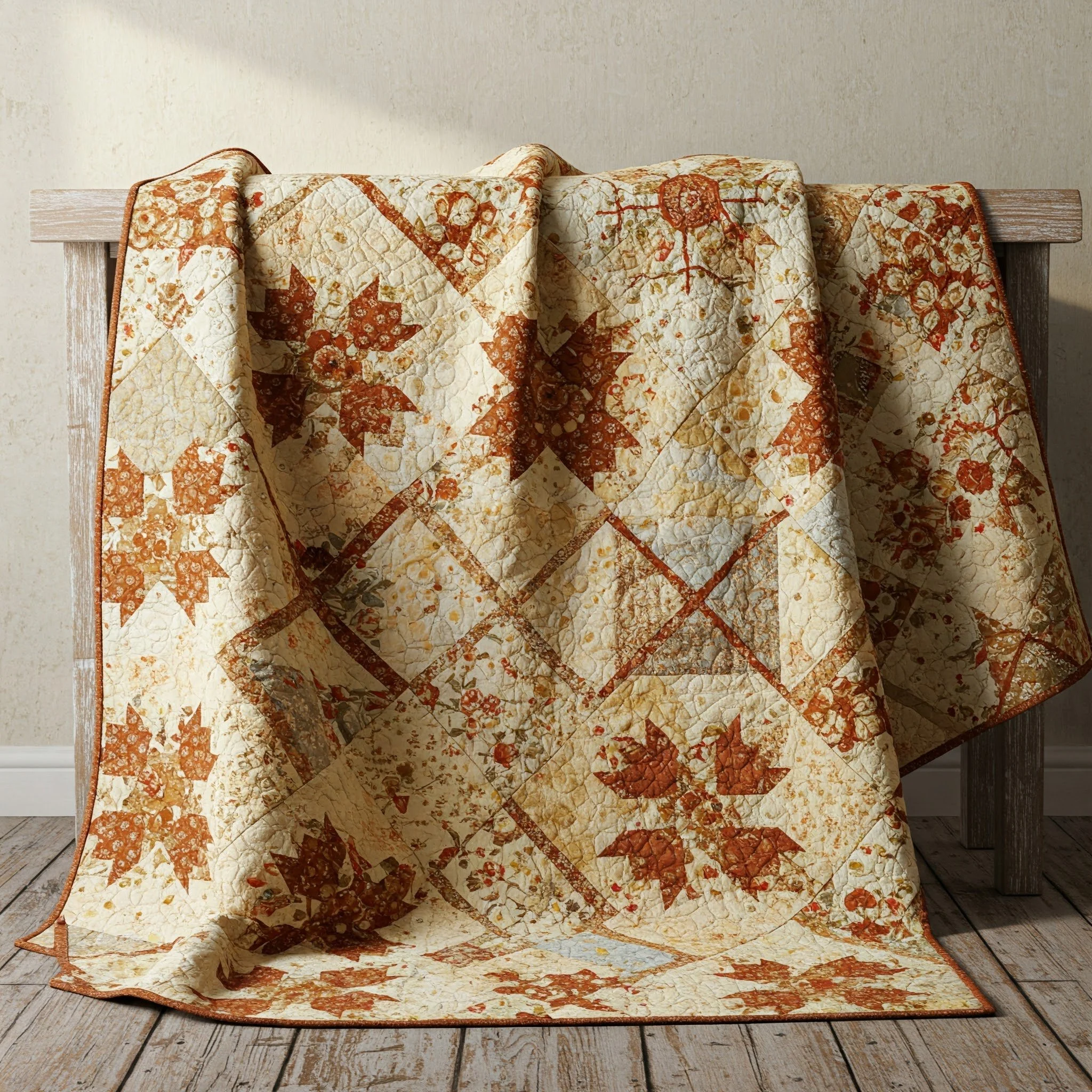Coverlet vs Quilt: What’s the Real Difference
Unravel the mystery between coverlets and quilts—discover their key differences, pros, and style tips to transform your bedroom into a cozy haven.
Alright, let’s set the scene: You’ve just stepped into a fancy bedding shop or you’re scrolling through endless online catalogs, and a whirlwind of blankets, comforters, duvets, throws, coverlets, and quilts are bombarding you with choices. Trying to differentiate them can feel like swimming against the tide—confusing and just a tad overwhelming. So, how in the world are you supposed to tell a coverlet from a quilt, and why does it even matter? Don’t fret! We’re about to dive deep into the fabric labyrinth to clarify the differences, similarities, and unique perks of these two bedding superstars.
Choosing the ideal bed covering isn’t just about good looks; it’s also about practicality, comfort, and seasonality. After all, you want the piece that’s right for your environment and lifestyle. But hold your horses—before grabbing one off the shelf in a random color or texture, let’s unravel the puzzle of Coverlet vs Quilt: What’s the Real Difference? Indeed, they can appear quite similar at first glance, but trust me: there’s more than meets the eye.
In this guide, we’ll dig into key characteristics—like how these beddings are constructed, what makes them stand out style-wise, and when each one truly shines. By the time you reach the end, you’ll not only be an aficionado but also be able to pick the perfect bedding piece to spruce up your bedroom décor. Ready to learn more? Buckle up, buttercup, because we’re diving right in!
Coverlet vs Quilt: What’s the Real Difference?
If you’ve ever wondered how to spot a coverlet from a mile away or how to recognize a quilt in a stack of bedding, then you’re in the right place. While rummaging in the linen closet, your cat might wonder which bedding piece to lounge on first—yet you’re here seeking the real goods on these two. So, let’s break down the main differences between a coverlet and a quilt, from structure and function to design.
Construction Approach
Coverlet: Often a single layer of decorative fabric, sometimes backed with a thin liner. Think of it as a light, top layer designed primarily for style and a little warmth.
Quilt: Typically composed of three layers (front fabric, batting or filler, and backing fabric) all stitched or quilted together. You’ll notice those signature patterns of stitching that help secure the filler.
Weight and Warmth
Coverlet: Usually lighter and more breathable, making it an excellent option for warm climates or as a standalone piece during summer.
Quilt: Offers moderate warmth due to its filler layer, perfect for transitional weather or layering under heavier blankets in winter.
Design and Aesthetics
Coverlet: Tends to be decorative, with textures like jacquard, matelassé, or embroidered designs. They can instantly dress up a bed.
Quilt: Boasts intricate patchwork or detailed stitching patterns. Often, quilts have a bit of a nostalgic or traditional vibe (though modern, minimalist quilts are a thing too).
Practical Purpose
Coverlet: Usually acts as the top decorative layer, easily tossed on or folded at the foot of the bed for extra flair.
Quilt: Functions as both décor and a source of warmth. If you need a bit more coziness, a quilt can be your main blanket—or a layering piece.
Maintenance and Care
Coverlet: Generally a breeze to wash, especially if it doesn’t have delicate trimmings.
Quilt: Requires a bit more careful cleaning depending on the fabric and batting material, especially if it’s handmade or vintage.
So that’s the big-picture answer to Coverlet vs Quilt: What’s the Real Difference? They’re both rockstars in their own right, but which one will rock your bedroom the best? Let’s keep digging, shall we?
Understanding the Coverlet
To truly appreciate the subtle nuances between these bedding beauties, let’s zoom in on the coverlet’s unique features. Sometimes overlooked and overshadowed by its more famous counterparts (like the duvet or comforter), the coverlet holds its own in the realm of design and practicality.
What Exactly Is a Coverlet?
A coverlet is a lightweight, non-reversible bedspread that usually covers the top of the bed and may not extend all the way to the floor. Its length typically lands somewhere around the box spring or just past the mattress edges, creating a sleek, tailored look. You can have coverlets made from various fabrics: cotton, linen, polyester, or even luxurious silk blends. Some are heavily textured (like matelassé), while others feature subtle prints.
The beauty of a coverlet lies in its versatility. You can layer it over a sheet set and under a comforter in colder months, adding both visual interest and an extra layer of warmth. Or you can use it by itself during milder seasons—hello, breezy summer nights—where you need a little cover but not too much heat. Sure beats tossing and turning, right?
Styling a Coverlet
Layering with a Duvet: Spread the coverlet neatly over your fitted sheet and flat sheet. Then fold the duvet halfway down the bed for a hotel-chic aesthetic.
Pairing with Decorative Pillows: Because coverlets are typically solid in color or feature subtle patterns, they’re great for showing off bold decorative pillows or shams.
Seasonal Swaps: Rotate coverlets in different textures or colors to reflect the season—light linen in summer, plush velvet in winter. The result? A bedroom that always feels fresh and updated.
When to Choose a Coverlet?
Hot Climates: If you live in a region that practically sizzles year-round, you’ll love the lightness of a coverlet.
Minimalist Décor Lovers: Prefer a sleek, modern look? Coverlets often add just the right amount of style without overwhelming the space.
Easy Maintenance: Need something you can toss in the wash quickly? Most modern coverlets are low-maintenance champs.
Quilts Unraveled
Now let’s shift gears and talk about quilts. With a storied history dating back centuries, quilts have become synonymous with craftsmanship, tradition, and comfort. But guess what—there’s a modern side to quilts too. They’ve evolved way beyond grandma’s patchwork patterns (though we still adore those timeless classics).
Anatomy of a Quilt
A typical quilt comprises three main components:
Top Layer: This might feature patchwork designs, appliques, or a single large piece of fabric adorned with quilting stitches.
Batting (Filler): Usually made from cotton, polyester, wool, or a blend. This layer provides insulation and contributes to the quilt’s warmth.
Backing Layer: The reverse side, which can be solid or patterned. It’s all sewn together with ornamental or functional stitches that keep the layers from shifting.
Traditional quilts often show off meticulously pieced-together fabrics forming geometric shapes or more elaborate motifs. Meanwhile, contemporary quilts might display more abstract patterns or minimalist lines. Essentially, a quilt is as much about art as it is about practical snuggling.
Style Points for Quilts
Layering for Warmth: In cooler months, place a quilt over your usual sheets. If that’s not enough, layer a throw blanket or a duvet on top.
Statement Piece: Vintage or bold-patterned quilts can serve as the main attraction in an otherwise neutral bedroom, acting like a piece of functional wall art for your bed.
Personalization: Quilts are often handmade, which means you can customize the design, color palette, and size to your heart’s content. Talk about making a statement!
Why Pick a Quilt?
All-Season Flexibility: A lightweight quilt can work in summer, while a heavier one can be layered under other bedding in winter.
Artistic Appeal: If you’re a fan of handcrafted or bespoke décor, quilts often boast an artisanal flair that’s second to none.
Durability: Properly cared for, quilts can become heirloom pieces passed down through generations.
Factors to Consider Before Choosing
Ever found yourself torn between two equally appealing items? Picking the right bedding piece can be just as tricky. Is it better to go with that lush coverlet or that dreamy quilt you’ve been eyeing at the local boutique? Here are some factors to keep in mind before making the leap:
Climate: If you live in a hot and humid region, a lightweight coverlet might be more practical. Quilts, especially those with thicker batting, can provide welcome warmth in cooler areas.
Design Aesthetics: Are you aiming for a minimalist, modern vibe, or a cozy, rustic feel? Quilts, particularly patchwork ones, often exude a homey look, while coverlets can give off a crisp, contemporary vibe.
Purpose: Will you use this as your main bedding layer or more of a decorative accent? Coverlets are perfect for layering, whereas quilts can be both decorative and an all-in-one bed cover.
Budget: Handmade or heirloom quilts can be pricey, whereas coverlets (depending on fabric) might be more budget-friendly. Then again, you can also find luxurious coverlets that cost a pretty penny.
Allergies and Maintenance: If you have dust or material allergies, consider the ease of washing. Quilts with certain fillers might require gentle or professional cleaning, whereas coverlets can often be tossed straight into the washing machine.
Longevity: Are you looking for a quick style fix or a long-term investment piece? High-quality quilts can be treasured for generations. Coverlets can also last, but quilts typically have the edge in craftsmanship (especially if they’re handmade).
These pointers should help narrow down your choices, especially if you’re feeling a bit lost in the bedding aisle. Sometimes it’s not just about which is “better,” but about which aligns more closely with your lifestyle.
Care and Maintenance Tips
Maintaining your chosen bedding piece—whether it’s a coverlet or a quilt—doesn’t have to feel like rocket science. But a little tender loving care can significantly prolong its life and keep it looking fresh. Here are some pointers:
Regular Washing:
Coverlets: Machine wash on a gentle cycle using mild detergent. Avoid harsh chemicals or bleach.
Quilts: Check the care label. Some quilts—especially hand-stitched or vintage ones—require spot cleaning or dry cleaning. If machine-washable, use cold water and gentle cycles.
Air Drying vs Machine Drying:
Coverlets: Many can be tumble-dried on low, but removing them while slightly damp and air-drying flat helps prevent wrinkles.
Quilts: If it’s safe to machine dry, go for a low-heat setting. But be careful—overheating can damage the batting. Air drying is often the safer bet, especially for valuable quilts.
Storage Solutions:
Coverlets: Fold neatly and store in a cool, dry place, or hang them if space permits.
Quilts: Roll them rather than folding to avoid creases. If you must fold, occasionally refold to shift the stress points. Store in breathable cotton bags.
Sunlight Caution:
Excessive exposure to direct sunlight can fade colors over time. Try to keep them out of harsh rays if possible.
Regular Inspection:
Look for loose threads, holes, or signs of wear. Catching small issues early allows for quick fixes before they escalate.
Sure, it might sound like a lot to keep track of, but trust me—once you fall into a routine, it’s a breeze. And that extra bit of effort can preserve your bedding for years on end
Conclusion
At the end of the day, the choice between a coverlet and a quilt boils down to personal preference, climate, and how you envision your bedroom’s style. Some folks adore the artistic flair and moderate warmth of a quilt, while others can’t resist the sleek, lightweight appeal of a coverlet. Either way, both offer their own unique charm and can make your sleeping space feel downright inviting.
Feeling stuck? Ask yourself a few final questions: Do you crave a layering look or a simple top blanket? Are you itching for something that’s easy to wash, or are you willing to pamper an heirloom-quality quilt for the sake of that extra warmth and craftsmanship? And of course, do you want a show-stopping piece that anchors the entire room or a supporting player that quietly complements other décor?
Ultimately, there’s no wrong choice. You’re free to mix and match, rotate them by season, or pick one and run with it. What’s important is that your bedroom feels like a place you can kick off your shoes—possibly even jump in and flop onto the bed after a long day—and drift off in total comfort. Hopefully, this deep dive into “Coverlet vs Quilt: What’s the Real Difference?” has helped lighten the load on your decision-making process, making it a cinch to find that perfect bedding piece you’ve always dreamed of.
So go on, treat yourself and your bedroom to something that suits your fancy—whether it’s a sleek coverlet, a cozy quilt, or a bit of both. After all, why limit yourself? Get creative, layer them up, and don’t be afraid to experiment. When your room reflects your style and meets your comfort needs, you’ll practically hear your bed beckoning you to come snuggle up. And who doesn’t love a well-deserved night’s rest on a bed that’s dressed to the nines?
Good luck on your quest, happy decorating, and sweet dreams under whatever fabulous bedding you choose!
Frequently Asked Questions
Can I use a coverlet and a quilt together?
Absolutely! Some people love layering a quilt beneath a coverlet for added warmth and visual depth. Think of it like wearing a comfy sweater under a stylish jacket.Which one’s warmer, a coverlet or a quilt?
Generally, quilts provide more warmth thanks to their batting layer. Coverlets are usually more about decorative flair and light coverage.Will a quilt or coverlet make my bed look too bulky?
Quilts can add volume, especially if they’re thicker. Coverlets, being lighter, tend to maintain a sleek profile. If you’re concerned about bulk, choose a thin or lightweight quilt.Are quilts always old-fashioned looking?
Heck no! Modern quilts come in a wide range of designs—from minimalist geometric patterns to bold, contemporary prints. There’s something for every style preference.How often should I wash my coverlet or quilt?
This depends on usage. If you use it daily, aim for every couple of months. If it’s mostly decorative, washing once or twice a year might be enough. Always follow the care instructions on the label.




